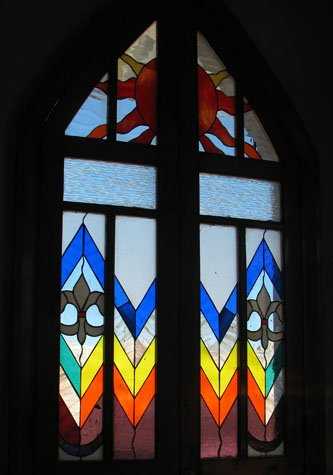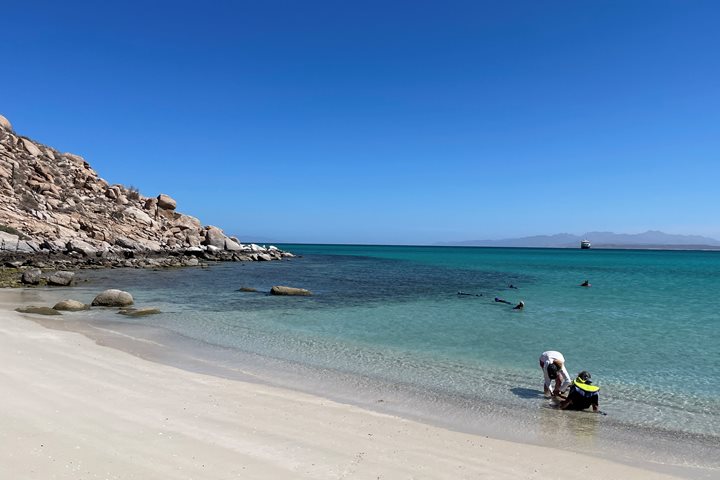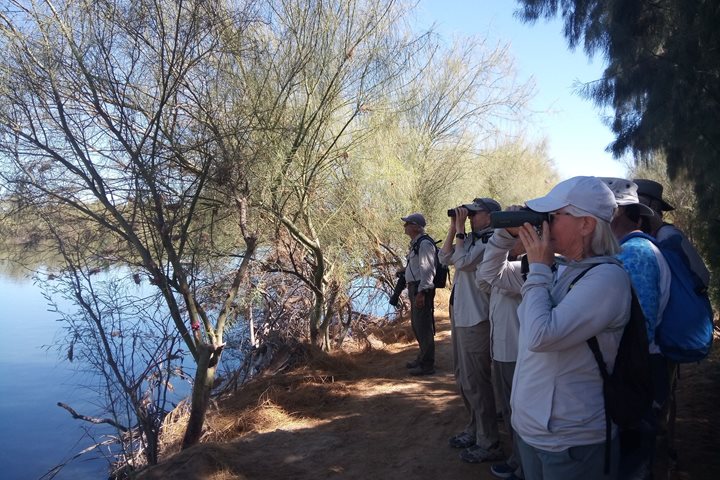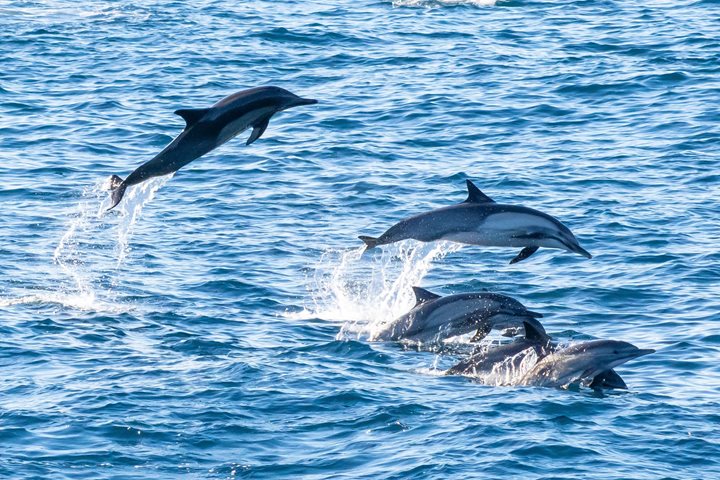The National Geographic Sea Bird nestled into the sheltered water off the southern tip of Isla San Marcos, avoiding a brisk breeze that whipped the sea from the north. Pale stark cliffs rose from our landing beach, hinting at the unusual geology of this island where an active gypsum mine is in operation. We took advantage of the morning to walk along a dirt road into the small village to investigate. Dust billowed from immense piles of crushed, powdery rock, and a thin veneer of dust covered the brightly painted houses. It didn’t take too long to see the small graveyard, two well-kept churches decorated with stained-glass windows, and the cranes and conveyer belts that transferred the gypsum in preparation for shipping to markets in Central America and elsewhere. Before leaving the island, swimmers enjoyed the cool water, while others climbed aboard kayaks or Zodiacs for a bit of exploration.
By mid-afternoon the ship was secured at the dock in Santa Rosalía, another mining town on the nearby Baja Peninsula. This community was established in the 1880s for the rich supplies of copper, cobalt, and manganese. A French company, El Boleo, ran the mine for many years until it became commercially unproductive. Mining has now resumed with the use of modern equipment, and the streets are bustling with activity. The French heritage is evident in the local architecture as many of the structures are of wood and have covered verandas in front. Old mining equipment is displayed along several of the main streets, and many of the original buildings remain. The metal church and El Boleo Bakery are well-known highlights. We not only tasted many of the newly baked treats, but also entered the backroom where racks of goods cooled near the brick ovens. After visiting these sites we congregated at the historic Hotel Francés for drinks and snacks before returning to the ship and motoring on to other adventures.







